by Vivek Waghmode (BioEnegy Times) In a major move to advance clean energy adoption and bolster the Centre’s green agenda, the Indian Army has officially incorporated biodiesel into its fuel network. The initiative was inaugurated at a ceremony in New Delhi, where
Happy Hanukkah!
Chanukah samayach!
May we all receive the blessings of the season and celebration of light.
California Regulators Back Cheaper, Higher-Ethanol Gasoline
by Alex Nieves (Politico Pro) Gov. Gavin Newsom signed a law this year with the aim of lowering gasoline prices by blending more ethanol into fuel. -- California environmental regulators on Thursday (December 11, 2025) endorsed higher ethanol content in gasoline, paving the way for the state to permanently allow the blend as a way to lower fuel prices.
What happened: The California Air Resources Board, the California Department of Toxic Substances Control and other agencies published a study finding that allowing gasoline blended with up to 15 percent ethanol — known as E15 — would have little impact on air, water and soil quality when compared to the current widespread use of E10 fuel.
The report recommends that the California Environmental Policy Council, which will have final say over new state rules regulating E15, declare that the new fuel blend does not pose a significant adverse impact on public health or the environment compared to lower ethanol options.
Why it matters: Gov. Gavin Newsom signed a law earlier this year, AB 30, that lets fuel suppliers sell gasoline blended with up to 15 percent ethanol — an option that is around 25 cents per gallon cheaper than traditional gas — until CARB adopts a regulation approving it or publishes an assessment demonstrating why the use of the fuel is not feasible. READ MORE
- California Multimedia Evaluation of Gasoline Containing up to 15 percent Ethanol (E15) (California Air Resources Board)
Davids, Colleagues Introduce Bipartisan Bill to Boost Sustainable Aviation, Support Farmers, Grow American Jobs
(Office of U.S. Representative Sharice Davids (D-KS-03)) U.S. Representative Sharice Davids (D-KS-03) — alongside Representatives Mike Flood (R-NE-01), Troy Carter (D-LA-02), and Tracey Mann (R-KS-01) — introduced the Securing America’s Fuels (SAF) Act, bipartisan legislation designed to strengthen the sustainable aviation fuel (SAF) industry, create economic opportunities for farmers, and reduce emissions in the transportation sector.
“Investing in sustainable aviation fuel isn’t just good for the environment — it’s good for Kansas farmers, our communities, and our economy,” said Davids. “The SAF Act ensures that clean fuel production incentives are strong and long-term so businesses, farmers, and innovators can plan for the future with confidence. The bipartisan support shows the incredible potential we have to build a healthier, stronger, and more prosperous future for generations to come.”
“America is on the cusp of the next great biofuels revolution,” said Representative Mike Flood (R-NE-01). “The Securing America’s Fuels Act is yet another way Congress can grow our bio economy and encourage innovation that creates great jobs across rural America. Sustainable aviation fuel will help lower emissions while expanding domestic markets for our nation’s farmers, ensuring that our ag economy thrives for generations to come. I want to thank Congresswoman Davids for introducing this much-needed bill and look forward to working together to advance this commonsense, bipartisan bill through Congress.”
The sustainable aviation fuel (SAF) industry currently relies on the 45Z Clean Fuel Production Tax Credit to make production economically viable. While recent legislation extended the credit for all clean fuels, it eliminated the SAF-specific bonus. To address this challenge, the SAF Act would:
- Reinstate the SAF bonus credit eliminated under the recent federal budget, allowing qualifying SAF producers to receive up to $0.35 or $1.75 per gallon.
- Extend the 45Z Clean Fuel Production Tax Credit for all clean fuels through 2033, providing long-term stability for the growing clean fuels industry.
SAF is a game-changer for local communities, agriculture, and the transportation industry. Scaling SAF to meet U.S. goals could generate 33,000 construction jobs over five years, sustain 4,500 permanent operations jobs, and support 60,000 jobs in agriculture and logistics by 2030. SAF can also reduce lifecycle greenhouse gas emissions by up to 80 percent, delivering major environmental benefits while using existing aviation infrastructure.
"Without coordinated action between government and industry, greenhouse gas emissions will continue to increase as more people and goods fly through our skies,” said Representative Troy Carter (D-LA-02). “Sustainable aviation fuel is an exciting, new green fuel that’s creating jobs in Louisiana and driving demand for American agricultural products. I’m proud to introduce this bipartisan legislation to ensure America is on track to meet the growing demand for cleaner transportation and healthier communities.”
“Sustainable aviation fuel is a worthwhile investment for American agriculture and for American energy dominance,” said Representative Tracey Mann (R-KS-01). “The Securing America’s Fuels Act gives Kansas farmers the certainty they need to plan, invest, and keep supplying fuel to the country and our aviation sector. I will always support legislation that supports rural communities and helps the United States continue to lead the world in producing the fuels of tomorrow.”
Davids co-chairs the Congressional Sustainable Aviation Caucus (CSAC), which works to reduce the aviation industry’s environmental impact and maximize its financial sustainability. By leveraging federal policy, holding forums, and bringing together public and private partners, the caucus plays a key role in the integration of new technologies into the nation’s aviation network.
The bipartisan legislation is endorsed by major industry and agricultural groups, including National Corn Growers Association, SAF Coalition, Airlines for America, Kansas Farm Bureau, Renew Kansas, Kansas Corn, Kansas Soybean Association, Greater New Orleans Inc., Nebraska Corn Growers Association, Nebraska Soybean Association, Nebraska Farm Bureau, Twelve, Darling Ingredients, Louisiana Farm Bureau Foundation, Advanced Biofuels Association, Global Business Travel Association, and American Sugarcane League.
“The SAF Coalition applauds Reps. Sharice Davids and Mike Flood for their leadership in introducing The Securing America’s Fuels Act,” said Alison Graab, Executive Director, Sustainable Aviation Fuel (SAF) Coalition. “This legislation continues the broad, bipartisan support for SAF in Congress and recognizes SAF’s unique ability to fuel America’s energy dominance while supporting American farmers. The SAF Coalition urges Congress to pass this legislation so we can grow America’s rural economies, create new markets for our farmers and secure a stronger energy future for our nation.”
“Agriculture and aviation are crucial to Kansas’ economy and Kansas Farm Bureau appreciates Rep. Sharice Davids’ leadership in introducing the Securing America’s Fuels Act alongside Rep. Tracey Mann. Incentivizing the use of domestic crops to produce sustainable fuels creates a new market for Kansas farmers while lowering the carbon emissions of the aviation industry,” said Joe Newland, President, Kansas Farm Bureau.
"The development of Sustainable Aviation Fuel (SAF) holds great promise for Nebraska biofuels producers as well as Nebraska's farmers and ranchers,” said Mark McHargue, President, Nebraska Farm Bureau Federation. “We appreciate the leadership of Nebraska Congressman Mike Flood in offering this legislation that provides incentives that will help get this emerging industry off the ground. Nebraska Farm Bureau stands ready to work to get this legislation approved and help Nebraska become the SAF epicenter of the country."
“It is crucial that Congress finds ways to support farmers with good domestic policy, at this time when international trade negotiations have left farmers in difficult market conditions,” said Richard Fotenot, President, Louisiana Farm Bureau. “Congressional policy changes can also provide relief to American consumers. The SAF Act does both. It creates consistency in domestic aviation fuel markets in a sustainable manner important to consumers. We are grateful to Congressman Carter and his colleagues for continuing to find ways to support these efforts through ideas like the SAF Act.”
“SAF may offer a great opportunity for sugarcane farmers,” said Jack Pettus, VP of Government Relations, American Sugar Cane League. “Our mills use bagasse, the fibrous byproduct of recovering sugar from the sugarcane plant, to power their operations during harvest season. Our farmers have been growing and delivering this renewable fuel for over a century and we are anxious to find new uses for the excess biofuel (bagasse) that we currently produce. The American Sugar Cane League appreciates this bipartisan effort to identify and encourage demand for domestic renewable energy feedstocks in markets like aviation fuels.”
“The Advanced Biofuels Association strongly supports this bipartisan effort to strengthen sustainable aviation fuel (SAF) producers and improve the overall availability of renewable fuels for America’s airline industry,” said Michael McAdams, President, Advanced Biofuels Association. “This type of legislation is essential in the United States’ effort to achieve its energy dominance policy agenda.”
“Delta applauds Reps. Flood, Davids, Mann, and Carter for their leadership in introducing the Securing America's Fuels Act, which will ensure 45Z reaches its full potential and provides the critical investment certainty necessary to bring additional SAF production facilities online to meet our industry's unprecedented demand for cost-competitive, homegrown fuels," said Cherie Wilson, Vice President, Government Affairs - Sustainability, Delta Air Lines.
“U.S. airlines are grateful to Representatives Flood, Davids, Carter, and Mann for introducing legislation that would restore and extend the full 45Z tax credit,” said Airlines for America. “This will stimulate private sector investment in SAF while also bolstering American energy dominance. This credit is a win-win for both the aviation and agriculture industries, supporting U.S. job growth across the country.”
“The Clean Fuel Production Credit is an extremely valuable economic support policy for the rural economy, and we are pleased to see Kansas taking the lead in extending and expanding it,” said Kaleb Little, Kansas Soybean Association CEO. “We thank Representative Davids and Representative Mann for co-sponsoring this bi-partisan legislation. Biomass-based diesel production supports approximately 10 percent of the value of every bushel of soybeans grown in the United States, or an additional $149 million for Kansas farmers in 2024. Farmers and fuel producers have made tremendous investments to build a biodiesel, renewable diesel and sustainable aviation fuel industry that can help meet America’s energy needs.” READ MORE
Related articles
- NATA Welcomes Legislation to Restore SAF Tax Credit Value (National Air Transportation Association)
- U.S. SAF tax credit gets new life in bipartisan House legislation (The Air Current)
- GBTA Urges Support for “Securing America’s Fuels (SAF) Act” Among U.S. Policymakers (Global Business Travel Association)
- SAF Coalition Applauds the Introduction of Securing America’s Fuels (SAF) Act in U.S. House of Representatives (SAF Coalition)
- NBAA Welcomes Bipartisan Bill to Restore and Extend SAF Tax Credit (National Business Aviation Association)
- SAF Act aims to extend 45Z credit, reinstate SAF premium (Ethanol Producer Magazine)
Excerpt from Global Business Travel Association: GBTA applauds today’s introduction of the “Securing America’s Fuels (SAF) Act” in the U.S. House of Representatives which would restore the full value of the credit for Sustainable Aviation Fuel and extends related 45Z tax credits through 2033.
GBTA, as well as the SAF Coalition, sent letters to key U.S. policymakers urging swift, bipartisan passage of the bill which will improve economic growth, provide business certainty for SAF producers and airlines, and lower costs for consumers and businesses travelers over time.
In brief, the 45Z Clean Fuel Production Tax Credit currently allows SAF bonus credits of up to $1.75 per gallon if prevailing standards are met. However, in July 2025 the SAF bonus credit was eliminated beginning in 2026, reducing the maximum incentive and undermining the economics of new SAF projects.
“Reliable, affordable, and sustainable air travel is essential to our members’ operations, and the future growth of the U.S. economy. GBTA strongly supports the passage of the SAF Act and encourages the House to include complementary measures that streamline SAF certification, improve supply chain logistics, advance research and demonstration programs that lower costs, and accelerate deployment at airports nationwide,” said GBTA CEO Suzanne Neufang.
Read the full GBTA letter here. READ MORE
Excerpt from National Business Aviation Association: “NBAA thanks Reps. Flood and Davids for introducing this measure and understanding SAF’s economic and sustainability benefits,” said NBAA President and CEO Ed Bolen. “Restoring the full credit provides the clarity and stability needed to unlock investment, expand supply and accelerate progress toward our industry’s long-term environmental commitments.”
SAF is a drop-in jet fuel produced from bio-based feedstocks and can reduce lifecycle greenhouse gas emissions by up to 80% over legacy fuels. The fuel is central to business aviation’s commitment to achieve net-zero carbon emissions by 2050. READ MORE
Excerpt from Ethanol Producer Magazine: The original 45Z tax credit, as established by the Inflation Reduction Act of 2022, provided a tax credit for the production and sale of low-emission transformation fuels. The credit started at 20 cents per gallon for non-aviation fuels and 35 cents per gallon for sustainable aviation fuel (SAF). For facilities that satisfy the prevailing wage and apprenticeship requirements, the value of the tax credit was up to $1 per gallon for non-aviation fuels and $1.75 per gallon for SAF. Under the IRA, the 45Z credit was available for 2025, 2026 and 2027.
President Trump on July 4 signed the One Big Beautiful Bill Act, a budget reconciliation package that extended the 45Z credit through the end of 2029, altered the credit by limiting eligibility to fuels derived from feedstocks produced or grown in the U.S., Canada or Mexico, and eliminated the “special rate” for SAF. The elimination of the “special rate” effectively caps the value of the SAF credit at $1 per gallon starting in 2026.
...
The SAF Act is not the only legislation introduced in recent months to reinstate 45Z's special rate for SAF. In October, Rep. Mike Thompson, D-Calif., introduced a bill that aims to reinstate many of the renewable energy tax credits eliminated by the OBBBA. One provision of that bill aims to reinstate the 45Z credit premium for SAF. READ MORE
QUOTE OF THE WEEK -- Ernest Moniz
“Ethanol is the pathway now toward a low carbon future and the key to energy transition. If you look at low-carbon, scalable, affordable fuels, ethanol is the only game in town.” -- Ernest Moniz, EFI Foundation and former US Secretary of Energy, quoted in Oklahoma Farm Report READ MORE
Sustainable Aviation Fuel Market Size to Worth USD 357.41 Billion by 2035 - Exclusive Report by Towards Chemical and Materials
(Precedence Research/Yahoo! Finance/Globe Newswire) According to Towards Chemical and Materials Consulting ™, The global sustainable aviation fuel market was estimated to be USD 2.31 billion in 2025 and is projected to reach USD 357.41 billion by 2035, at a CAGR of
December 15, 2025 Read Full Article
Hydrogen in Aviation Offers Potential for Growth and Deeper Emissions Reductions, New Study Shows
(Rolls-Royce) Rolls-Royce, easyJet, Heathrow and University College London Air Transportation Systems Lab (UCL ATSLab) published a report highlighting how hydrogen-powered aircraft could enable European and UK aviation to cut carbon emissions while supporting future growth. The study, Enabling Hydrogen in the European Aviation
December 15, 2025 Read Full Article
German Cabinet Approves Draft Biofuels Law, Food-Based Ingredient Use to Continue
by Michael Hogan (Reuters) Germany's cabinet approved a draft biofuels law on Wednesday, which will allow continued use of food and animal feed as biofuel ingredients, the environment ministry said in a statement. Germany’s programme to cut greenhouse gases includes blending biofuels,
December 15, 2025 Read Full Article
Maryland Biofuels Task Force Releases Landmark Report Showing Major Economic, Environmental & Public Health Benefits of Higher Biofuel Blends
(Maryland Biofuels Task Force) Report highlights lower fuel prices and immediate reductions in carbon and air-toxic emissions under a proposed Clean Fuel Standard. — The Maryland Biofuels Task Force, a diverse coalition of ~50 subject-matter experts representing 30+ agricultural, environmental, governmental,
December 15, 2025 Read Full Article
The Digest’s 2025 Multi-Slide Guide to the Cascadia SAF Ecosystem
by Jim Lane (Biofuels Digest) The Pacific Northwest is positioning itself as a premier Sustainable Aviation Fuel (SAF) hub, leveraging over 50 million acres of woody biomass and strong policy frameworks like Washington’s Clean Fuel Standard. This guide outlines a multi-modal
December 15, 2025 Read Full Article
Webinar: Global SAF Market Deep Dive: Regional Developments, Corsia, and 2026 Outlook --- December 11, 2025 --- ONLINE

Two-part webinar How are mandates impacting the sustainable aviation fuel (SAF) market? We have gathered our global market experts to present a two-part webinar series that delivers a comprehensive market analysis and the opportunity to join live Q&A sessions. Now available on demand. Session
December 15, 2025 Read Full Article
Trump Administration Cancels Pipeline Safety Research
by Mike Soraghan (Politico Pro Energywire) The study was mostly complete, meaning taxpayers paid for safety information they'll never see, a watchdog group said. -- Federal officials have quietly canceled research into the dangers of pipelines carrying carbon dioxide and hazardous substances, according
December 15, 2025 Read Full Article
45Z Tax Credits Set to Bring Windfall to Ethanol Plants
by Jared White (Brownfield Ag News) Major changes to the 45Z tax credit are set to go into effect at the end of the month. Scott Irwin, ag economist at the University of Illinois, says the
December 15, 2025 Read Full Article
IACS Reaffirms Its Strong Commitment to Supporting the Safe Implementation of the Decarbonisation and Digitalisation Agendas
(International Association of Classification Societies) Council of the International Association of Classification Societies reviews progress across its extensive work programme with emphasis on Decarbonisation, Digitalisation, Common Structural Rules and Quality performance. IACS Council (C92) met in London last week (week of December
December 15, 2025 Read Full Article
Happy Hanukkah!
Chanukah samayach! May we all receive the blessings of the season and celebration of light.
December 14, 2025 Read Full Article
Technical Brief: A Comparative Assessment of Modern Clean Cooking Fuel
(United Nations Industrial Development Organization) A shift from conventional sources of energy for cooking raises the question of what alternatives exist. Cooking is an energy-intensive process, so the transition needs to be to sources that can meet the energy demand, are
December 12, 2025 Read Full Article
2026 Science Symposium --- January 26-27, 2026 --- Lewis Center, OH

From the Science Education Council of Ohio Conference Strands Innovate to Elevate! From chalkboards to coding, science classrooms have transformed dramatically over the past 50 years—and they continue to do so at lightning speed. This strand focuses on the integration of cutting-edge technologies
December 12, 2025 Read Full Article
Explore, Download and Share These Proven Real-World Educational Resources
(Grow Next Gen) Curriculum: Explore, download and share these proven real-world educational resources to help bring science and agriculture to life in your classroom. Relevant and engaging, you’ll find useful, easy-to-implement lesson plans and activities. For over a decade, GrowNextGen has provided free,
December 12, 2025 Read Full Article
Haffner Energy Secures Major Partnership in Canada, Kicks off Unprecedented Scale-up
(Haffner Energy) Haffner Energy announces the signing of a major strategic partnership in Canada, just weeks after unveiling its H6 product line to the public. This agreement marks a major breakthrough for the company and reverses the trend of a difficult
December 12, 2025 Read Full Article
Fuel Retailers, Biodiesel Producers and Home Heating Industry Support Biodiesel Blenders' Tax Credit Legislation
(NATSO/PR Newswire) NATSO, the national association representing America's travel plazas and truck stops, SIGMA: America's Leading Fuel Marketers, the National Association of Convenience Stores (NACS), the National Energy & Fuels Institute (NEFI) and Sustainable Advanced Biofuel Refiners (SABR) today applauded Senator
December 12, 2025 Read Full Article
Indonesia Aims to End Diesel Imports in 2026 with Expanded Biodiesel Program
by Dames Alexander Sinaga (Xinhua) Indonesia aims to halt diesel fuel imports in 2026 as the government accelerates its biodiesel program and boosts domestic refinery capacity, marking a major step toward strengthening energy security and reducing reliance on foreign fuel supplies. A
December 12, 2025 Read Full Article
CARB Strengthens Protections to Curb Methane Emissions at Landfills
(California Air Resources Board) The California Air Resources Board approved updates to its Landfill Methane Regulation to enable quicker detection and repair of methane leaks at landfills, improved monitoring and reporting, public data transparency and stronger action for recurring issues. Advanced
December 12, 2025 Read Full Article
LanzaTech Announces First SAF Plant in Oman
by Meghan Sapp (Biofuels Digest) In Oman, IFC – International Finance Corporation is collaborating with LanzaTech to support the development of Oman’s first Sustainable Aviation Fuel (SAF) plant. The collaboration will aim to assess key technical and financial aspects of the groundbreaking
December 12, 2025 Read Full Article
Teagasc Unveils New Study on Agricultural Feedstocks for Ireland’s Emerging Biomethane Industry
(Teagasc) Teagasc today, December 11th, announced the publication of a landmark research report assessing the potential for agriculture-based anaerobic digestion (AD) to support Ireland’s growing biomethane industry. The report, produced under the FLEET Project (Farm Level Economic, Environmental and Transport Modelling of
December 12, 2025 Read Full Article
Topsoe and Carbon Neutral Fuels Join Forces to Advance e-SAF with SOEC Electrolyzer Technology
(Topsoe) • Topsoe has been chosen to deliver advanced Solid Oxide Electrolyzer Cell (SOEC) technology, consuming 120MW green power for Carbon Neutral Fuels’ e-SAF (Sustainable Aviation Fuel) project called Project Starling in Workington, UK. The plant is expected to produce 25,000 metric tons of e-SAF per
December 12, 2025 Read Full Article
CETY Launches HTAP™ Platform for Anaerobic Digestion Facilities to Increase RNG Production and Convert Digestate into Biochar
(Clean Energy Technologies) Clean Energy Technologies, Inc. (Nasdaq: CETY) (“CETY” or the “Company”), a clean energy technology company delivering scalable solutions in power generation, storage, waste-to-energy, and heat-to-power, today (December 10, 2025) announced a dedicated HTAP™ based platform designed for integration with
December 12, 2025 Read Full Article
Tastes Great, Less Filling — That’s Why Biogas Is Booming
by Jim Lane (Biofuels Digest) ... ANVIL Not… beer? A.D. Nope. Biogas. Renewable methane. Think of it like this: Tastes great to the markets: new contracts, new plants, new revenue — Germany building upgrading units like they’re offensive lines. Less filling for the planet: lower CI, lower methane, lower
December 12, 2025 Read Full Article
The Nebraska Corn Board Is Seeking Applications for Ethanol Infrastructure Grant Program DEADLINE January 23, 2026
(Nebraska Corn Board/Morning Ag Clips) The Nebraska Corn Board (NCB) is accepting applications for the Ethanol Infrastructure Grant Program, which helps Nebraska fuel retailers add or expand higher ethanol blend options such as E15, E30 and E85. The program is designed
December 12, 2025 Read Full Article
2026: The Year Ahead -- 45Z Takes off, but Not to Expand SAF
by Jacqui Fatka (CoBank) Key Points: Ethanol producers can capture significant 45Z payments with minimal plant changes. For connected facilities, the launch of Tallgrass’ Trailblazer carbon pipeline creates an extra CI reduction boost. The elimination of the SAF incentive will further constrain liftoff
December 12, 2025 Read Full Article
California Regulators Back Cheaper, Higher-Ethanol Gasoline
by Alex Nieves (Politico Pro) Gov. Gavin Newsom signed a law this year with the aim of lowering gasoline prices by blending more ethanol into fuel. -- California environmental regulators on Thursday (December 11, 2025) endorsed higher ethanol content in gasoline, paving
December 12, 2025 Read Full Article
New York Finalizes Emissions-Reporting Requirements
by Marie J. French (Politico Pro) Polluters will have to report greenhouse gas emissions in the Empire State. -- Power plants, factories, large dairy farms, landfills, fuel suppliers and other polluters based in New York will have to provide emissions reports to
December 11, 2025 Read Full Article
Global Decarbonization Efforts Are about to Be Reshaped by the EU
by Jim Giles (Trellis) The impact of the bloc’s Carbon Border Adjustment Mechanism extends well beyond the hard-to-abate sectors covered by the legislation. -- Key Takeaways: Imports into the European Union from six hard-to-abate sectors will be subject to a carbon fee from
December 11, 2025 Read Full Article
Celignis USA Corporation Launches Iowa Laboratory to Serve North American Bioeconomy
(Celignis) Celignis USA Corporation, the U.S. franchise of bioeconomy analytics and bioprocess development leader Celignis, today announced the launch of commercial operations at its 10,000 sq. ft. laboratory in Waterloo, Iowa. Celignis USA will offer the full Celignis portfolio of analytical and
December 11, 2025 Read Full Article
Ensuring Workforce Safety and Compliance in Biofuel Production
(Biofuels International) As the world transitions to renewable energy, biofuel production plays a vital role in reducing carbon emissions and driving sustainable energy solutions. However, the shift to greener operations also comes with its own set of challenges. While biofuel producers work
December 11, 2025 Read Full Article
Certas Energy Awarded Ecovadis Award for Sustainability Performance
(Biofuels International) Independent fuel distributor in the UK Certas Energy has achieved the EcoVadis ‘Gold Medal’ for its commitments to responsible business practice. The award places Certas Energy in the top five per cent of businesses reviewed by EcoVadis globally in relation to sustainability
December 11, 2025 Read Full Article
Danforth Plant Science Center to Lead Multi-Disciplinary Research to Enhance Stress Resilience in Bioenergy Sorghum
by Donald Danforth Plant Science Center (Newswise) Andrea Eveland, Ph.D., Principal Investigator and member at the Donald Danforth Plant Science Center, will lead a multi-institutional project to deepen the understanding of sorghum, a versatile bioenergy crop, and its response to environmental challenges.
December 11, 2025 Read Full Article
Memorandum of Understanding Concluded on Establishing a Standard Design Framework Utilizing MILES for Liquefied CO2 Carriers and Alternative Fuel Ships
(Mitsui O.S.K. Lines) Mitsubishi Shipbuilding Co., Ltd., a part of Mitsubishi Heavy Industries group, Imabari Shipbuilding Co., Ltd., "K" LINE, MOL, NYK Line, JMU and NSY have concluded a Memorandum of Understanding (MoU) to establish a standard design framework to efficiently
December 11, 2025 Read Full Article
EBA Statistical Report 2025
(European Biogas Association) The European Biogas Association (EBA) today (December 10, 2025) unveils the 15th edition of its Statistical Report, the landmark annual publication offering the most comprehensive assessment of biogas and biomethane markets in Europe. The 2024–2025 dataset underscores the
December 11, 2025 Read Full Article
Vibra Exits Evolua Ethanol Venture in Strategic Capital Reallocation Move
(Brazil Stock Guide) Fuel distributor sells its 49.99% stake to Copersucar as it reshapes ethanol sourcing strategy and tightens capital discipline. Vibra Energia (B3: VBBR3) has signed an agreement to sell its full 49.99% stake in ECE S.A., known commercially as Evolua
December 11, 2025 Read Full Article
BNDES Approves R$ 384.3 Million for FS's Innovative CO₂ Storage Project.
(BNDES News Agency (Google Translation)) With resources from BNDES Mais Inovação, FS will store underground the CO2 produced in the manufacture of corn ethanol in Lucas do Rio Verde (MT). -- The Brazilian Development Bank (BNDES) has approved R$ 384.3 million to
December 11, 2025 Read Full Article
The Digest’s 2025 Multi-Slide Guide to Montana Renewables’ Expansion
by Jim Lane (Biofuels Digest) Montana Renewables is aggressively scaling, having reached a 45 million gallon per year SAF run rate in 2024, with plans to hit 150 million gallons by 2026. As a joint venture between Calumet and Warburg Pincus,
December 11, 2025 Read Full Article
Back China has Accelerating Ambitions in Biotechnology – Time for the U.S. & E.U. Bio-Economies to Evolve – Together
by Hendrik Waegeman (Bio Base Europe Pilot Plant/Biofuels Digest) ... I often feel like I’m somewhere between Tocqueville and Borat — impressed by American innovation, but puzzled by the anti-science politics that seem to hold it back. Europe, meanwhile, is often
December 11, 2025 Read Full Article
From Automobiles to AI... Hyundai Motor Company Expands Hydrogen Ecosystem
by Park Seong-su (Sisa Journal (Google Translation)) Expanding application areas, from hydrogen mobility to next-generation energy sources. -- Hyundai Motor Company plans to apply hydrogen technology across industries and develop new products. Hyundai Motor Company plans to build a hydrogen mobility ecosystem by
December 11, 2025 Read Full Article
Chinese Shipping Giants Team Up to Push Greener Marine Fuel
(Caixin Global) A coalition of top Chinese state-owned enterprises and academic institutions has launched a campaign to promote dimethyl ether (DME) as a next-generation marine fuel, positioning it as a cleaner and safer alternative to more established options like methanol and
December 11, 2025 Read Full Article
China Plans World’s First Nuclear-Powered Cargo Ship to Carry 25,000 Containers
by Kapil Kajal (Interesting Engineering) The reactor design is classified as a fourth-generation nuclear system and is expected to have a 40-year operational lifespan. -- China plans to build the world’s first nuclear-powered container ship, a project that could change commercial shipping as
December 11, 2025 Read Full Article
Zirconium Ferrite: Innovations in Biofuel Combustion Chemistry
(Bioengineer.org) In the evolving landscape of materials science, researchers have made significant strides in understanding the complexities of zirconium ferrite, particularly in its application within advanced photonic and electrochemical domains. The latest study published in Ionics explores a novel biofuel-assisted combustion
December 11, 2025 Read Full Article
MOL Eyes Expansion of Biodiesel under New China Partnership
by Bojan Lepic (Splash247) Mitsui O.S.K. Lines (MOL), Sinopec, and Marubeni have signed a memorandum of understanding (MOU) for the establishment of a long-term supply system for marine biodiesel fuel. This memorandum aims to establish a long-term and stable supply system for
December 11, 2025 Read Full Article
Impact of Salinity on Chlorella vulgaris: Nutritional and Biodiesel Potential
(Bioengineer.org) In recent years, the impacts of climate change and increased salinity levels in water bodies have garnered significant scientific attention. The pivotal research carried out by Gürsoy et al. delves into the stresses imposed by salinity on the microalga Chlorella
December 11, 2025 Read Full Article
New Study Shows EPA "Half RIN" Proposal Would Keep U.S. Soybean Demand Strong
(American Soybean Association/Morning Ag Clips) Researchers modeled three scenarios and found that the half-RIN approach delivers the greatest economic benefit to U.S. soybean farmers -- A new economic analysis finds that EPA’s proposal to assign 50% of the Renewable Identification Number (RIN)
December 11, 2025 Read Full Article
New Initiative Promotes US Biofuels for Maritime Market
(Renewable Fuels Association) The American Biofuels Maritime Initiative (ABMI), a unified group of bioenergy stakeholders co-chaired by the Renewable Fuels Association and the American Biogas Council (ABC), announced its official launch today. The new group plans to work with President Trump’s Administration and Congress to
December 11, 2025 Read Full Article
Catalysis for SAF Production
(Biofuels Digest) As the aviation industry accelerates its push toward net-zero, the role of advanced catalysis in enabling sustainable aviation fuel (SAF) production is becoming increasingly critical. Ketjen, a global leader in refinery catalyst solutions, is committed to help its customers in
December 11, 2025 Read Full Article
Blockchain Shipment of Bio-Butanol
by David Priestman (Logistics Business) Grangemouth-based Scottish green chemical producer Celtic Renewables has partnered with LogChain, a digital supply chain and logistics software developer, to make international shipping more sustainable with the first digitalised shipment of green chemicals. Celtic used LogChain’s private
December 11, 2025 Read Full Article
Clear Technical Standards Imperative before Making Petrol-Ethanol Fuel Mandatory: Experts
(Viet Stock) Experts and businesses are calling for a clear roadmap for E10 biofuel implementation to gradually replace traditional unleaded petrol to reduce emissions from vehicles. The Ministry of Industry and Trade issued Circular 50/2025/TT-BCT, setting out a national roadmap for adopting
December 10, 2025 Read Full Article
International Biomass Conference & Expo Now Accepting Nominations for Prestigious Industry Awards DEADLINE February 20, 2026
(BBI International) Nominations are now open for the Groundbreaker of the Year Award, the Excellence in Bioenergy Award, and the newly introduced Women in Biomass Award The International Biomass Conference & Expo is currently accepting nominations for the Groundbreaker of the Year
December 10, 2025 Read Full Article
proBIOGAS #International --- April 14-23, 2026 --- Stuttgart, Germany

Join the proBIOGAS #International Course — A Must for Anyone Involved in Anaerobic Digestion (AD) Are you a: Biogas plant operator or staff member? Farmer considering an AD facility? Government official working with biogas-related topics? Academic researcher looking for real-world insights? Investor exploring opportunities in renewable
December 10, 2025 Read Full Article
Biogas Online Training --- February 3-26, 2026 --- ONLINE

Tap into over 30 years of biogas training experience! By enrolling into this online training, you’ll get: Insight into the world of biogas from the perspective of the country with the longest biogas history – Germany Access to all presentations of your booked
December 10, 2025 Read Full Article
Farmers and Innovators Say There Is Potential in Australia's Untapped Biofuel Sector
by Danielle Pope (ABC) Innovators and farmers are calling for greater backing to help establish a domestic biofuel industry. The Clean Energy Finance Corporation estimates an Australian low-carbon fuel industry could be worth $36 billion by 2050. What's next? The federal government has established
December 10, 2025 Read Full Article
Markets, Trade, and Biofuels Set the Tone as NGFA Opens 54th Country Elevator Conference
(Grain Journal) ... Rounding out the morning, Jacqui Fatka, Lead Economist for Farm Supply and Biofuels at CoBank, provided an in-depth analysis of the evolving biofuels landscape. Her presentation covered expanding renewable diesel capacity, shifting soybean crush economics, export opportunities for
December 10, 2025 Read Full Article
Iowa Biodiesel Board: Market-Driven Policies Key to Long-Term Farm Recovery
by Jenna Higgins Rose (River Cities' Reader) The Iowa Biodiesel Board today responded to the Trump administration's announcement of a $12 billion Farmer Bridge Assistance Program, expressing appreciation for the support while emphasizing that long-term, market-driven policy solutions are essential to helping
December 10, 2025 Read Full Article
German Cabinet Approves Draft Biofuels Law, Food-Based Ingredient Use to Continue
by Michael Hogan (Reuters) Germany's cabinet approved a draft biofuels law on Wednesday (December 10, 2025), which will allow continued use of food and animal feed as biofuel ingredients, the environment ministry said in a statement. Germany’s programme to cut greenhouse gases includes
December 10, 2025 Read Full Article
We Need to Talk About Biomass
by David Carpintero (ePURE/Ethanol Producer Magazine) It’s the argument that wouldn’t die: the so-called “food vs. fuel” fallacy that has persisted in the global discourse on the role of biofuels in transport decarbonization. Fortunately, new research has finally driven a stake through
December 10, 2025 Read Full Article
Building a ‘Biological Engine’
by Katie Schroeder (Ethanol Producer Magazine) ... A self-evident truth for any ethanol producer, the science of fermentation makes ethanol production possible. However, today’s advanced yeast enable production to run at a scale hard to imagine 20 years ago. Today, genetically
December 10, 2025 Read Full Article
Media Training for Scientists --- December 16 and 18, 2025 --- ONLINE

(SciLine) You know the science, but conveying it skillfully to a journalist—and ultimately to that journalist’s audience—takes preparation and practice. SciLine offers media training opportunities, both in-person and virtually, to help you build the skills, knowledge, and confidence that can make
December 10, 2025 Read Full Article
The Road to Methanol
by Jim Lane (Biofuels Digest) The Road to Methanol, we go inside the technical and commercial blueprint that is redefining what’s possible at scale. Beaver Lake demonstrates how proven gasification technology, robust feedstock supply, and bankable offtake converge into a replicable model — one capable
December 10, 2025 Read Full Article
Lee Calls on EPA to Advance Trump Agenda by Not Shifting Compliance Costs to Refineries
(Office of U.S. Senator Mike Lee (R-UT) ) U.S. Senator Mike Lee (R-UT) led a letter today with colleagues from the Senate calling on the U.S. Environmental Protection Agency (EPA) to support President Trump’s American energy dominance agenda by preventing unfair reallocation of compliance
December 10, 2025 Read Full Article
Moeve and UPM Join Forces to Drive Innovation in Green Molecules
(Moeve) During an event held today (December 5, 2025) at Moeve's headquarters, the company and the Universidad Politécnica de Madrid (UPM) signed an agreement to create the first Green Molecules Innovation Chair, a pioneering collaborative space created with the aim
December 10, 2025 Read Full Article
Abundia Global Impact Group, Inc. Advances Its Plastics Recycling Facility with Alterra Energy's Technology Platform
(Abundia Global Impact Group) Abundia advances its licensing agreement by delivering site notification to Alterra Energy for the deployment of its plastics liquefactions technology at Abundia's Cedar Port Renewable Energy Complex -- Abundia Global Impact Group, Inc. (NYSE American: AGIG) ("Abundia" or
December 10, 2025 Read Full Article
Green Plains Achieves a Milestone as CO2 from Nebraska is Sequestered in Wyoming
(Green Plains) All Three Nebraska Facilities Now Capturing CO2; First 45Z Payment Demonstrates Early Value -- Green Plains Inc. (NASDAQ: GPRE) today announced that biogenic carbon dioxide from all three of its Nebraska facilities, Central City, Wood River, and York, is now
December 10, 2025 Read Full Article
Optimus Technologies and Mitsui & Co. Execute Strategic MOU for Glogal Distribution of Biodiesel Solutions
(Optimus Technologies/PR Newswire) Optimus Technologies, a leader in advanced biodiesel engine technology, today (December 9, 2025) announced the signing of a Memorandum of Understanding (MOU) with Mitsui & Co., Ltd. ("Mitsui"), one of the world's most diversified and respected trading and
December 10, 2025 Read Full Article
The Digest’s 2025 Multi-Slide Guide to Forest Concepts’ Feedstock Innovations
by Jim Lane (Biofuels Digest) Addressing the “slow build” bottleneck in biomass facilities, Forest Concepts introduces modular “Plug and Play” processing systems to accelerate deployment. Their proprietary Crumbles® technology creates uniform feedstock particles that tolerate high moisture, removing the need for
December 10, 2025 Read Full Article
What New Federal Timber Directives Mean for Wood Processing, Bioenergy, and Domestic Feedstock Supply
by Bill Hagy (LEC Partners/Biofuels Digest) In early 2025, two federal actions signaled a notable shift in how the U.S. approaches forest management, timber production, and the utilization of restoration byproducts. While they don’t change market fundamentals overnight, they do
December 10, 2025 Read Full Article
Beyond Aero Releases Plans for Hydrogen Bizjet Factory
by Charles Alcock (AIN Online) French start-up Beyond Aero has laid out plans for the factory in which it intends to manufacture its in-development hybrid-electric business jet. Yesterday, the Toulouse-based company released a feasibility study developed with architectural specialists at Porsche
December 10, 2025 Read Full Article
Trump’s Shadow Looms over EU Aviation Emissions Plan
by Tommaso Lecca (Politico Pro Climatewire) “God only knows what the Trump administration will do” if the EU expands its aviation emissions scheme, says an EU official. -- Donald Trump blew up global efforts to cut emissions from shipping, and now the
December 10, 2025 Read Full Article
Ontario Eases Biofuels Mandates
(Ontario Farmer) Ontario government is yielding to complaints from gas and diesel fuel suppliers, allowing them more time to comply with mandated standards -- The Ontario government is yielding to complaints from gasoline and diesel fuel suppliers and will allow them more
December 10, 2025 Read Full Article
Chevron CEO Sees Growing Potential in Biofuels and Geothermal Energy
by Clara Hudson (Wall Street Journal) Mike Wirth outlined the oil-and-gas company’s hopes for everything from carbon capture to hydrogen -- The head of one of the biggest oil companies in the world has his eye on expanding a variety of alternative
December 10, 2025 Read Full Article
Davids, Colleagues Introduce Bipartisan Bill to Boost Sustainable Aviation, Support Farmers, Grow American Jobs
(Office of U.S. Representative Sharice Davids (D-KS-03)) U.S. Representative Sharice Davids (D-KS-03) — alongside Representatives Mike Flood (R-NE-01), Troy Carter (D-LA-02), and Tracey Mann (R-KS-01) — introduced the Securing America’s Fuels (SAF) Act, bipartisan legislation designed to strengthen the sustainable aviation fuel (SAF) industry, create economic opportunities for
December 10, 2025 Read Full Article
New Fuel Transfer Agreement between KAUST and Arabian Petroleum Supply Company to Advance Sustainable Aviation Fuel Adoption
(King Abdullah University of Science and Technology (KAUST)) Access to sustainable aviation fuel will enable KAUST to develop more efficient formulations -- King Abdullah University of Science and Technology (KAUST) has entered into a new material transfer agreement (MTA) with the Arabian
December 10, 2025 Read Full Article
Bell 505 Achieves Over 700 Flight Hours with Blended Sustainable Aviation Fuel
(Bell Textron) In collaboration with Safran Helicopter Engines, Bell shares long-term success with using SAF on the Bell 505 -- Bell Textron Inc., a Textron Inc. (NYSE: TXT) company, announced during European Rotors 2025 that a single, dedicated Bell 505 has surpassed 700 flight hours using
December 10, 2025 Read Full Article
Banks Mining Cuts 2084 Tonnes of CO₂ Using Dieselite Biodiesel Blend
(Argent Fuel) Banks Mining, a long-established mining and quarrying company, has partnered with biodiesel supplier Argent Energy to lower carbon emissions from its mining operations. Known for surface mining, Banks operates one of the UK’s largest wholly-owned fleets of earthmoving machinery. The
December 09, 2025 Read Full Article
Qatar Unveils 5 New Research Projects to Advance SAF
(Qatar News Agency/Biobased Diesel Daily) Qatar has announced five new research projects aimed at accelerating the development of sustainable aviation fuel (SAF) as the country steps up efforts to curb emissions from one of the world’s fastest-growing industries. The ministry of environment
December 09, 2025 Read Full Article
Australian Renewable Fuels Delegation: Unlocking Opportunities in Australia’s Renewable Fuel & Gas Sector --- March 9-18, 2026 --- Australia DEADLIINE December 12, 2025

(Australian Trade and Investment Commission) Expression of Interest : The Australian Trade and Investment Commission invites leading companies to participate in a business delegation to Australia between 9 and 18 March 2026. This exclusive business delegation will bring together decision-makers from the
December 09, 2025 Read Full Article
Tidewater Midstream and Infrastructure Ltd. Announces an Initiative Agreement for Fluid Catalytic Cracking Co-processing at the Prince George Refinery
(Tidewater Midstream and Infrastructure) Tidewater Midstream and Infrastructure Ltd. ("Tidewater" or the "Corporation") (TSX: TWM) is pleased to announce that it has entered into an initiative agreement (the "FCC Initiative Agreement") with the Government of British Columbia that will provide Tidewater with BC
December 09, 2025 Read Full Article
Navigating Uncertainty: Impact of the IMO Net-Zero Framework Postponement
by Urszula Szalkowska and Nathalie Danel (EcoEngineers) The maritime industry is at a crossroads. The International Maritime Organization (IMO) recently postponed the adoption of its Net-Zero Framework during an Extraordinary Session of the Marine Environment Protection Committee (MEPC/ES.2). While procedural, this decision has sent
December 09, 2025 Read Full Article
Super Pollutants: The Hidden Multiplier in Climate Math
by Roxby Hartley, Ph.D. (EcoEngineers) Global Warming Potential over 100 years (GWP100) is masking the urgency of super pollutant mitigation. A temporal mismatch between how we measure greenhouse gases and when their damage occurs is a problem for climate action. Super pollutants, gases
December 09, 2025 Read Full Article
Manatee County Selects Nopetro and Johnson Controls to Deliver Innovative Renewable Natural Gas Project
(Nopetro Energy/PR Newswire) The first-of-its-kind facility on Florida's west coast will turn waste into clean fuel for local trucks and buses, create jobs, drive lasting economic and environmental benefits -- Nopetro Energy, a vertically-integrated producer, distributor and operator of natural gas solutions
December 09, 2025 Read Full Article
Gasum and REMA Open New Biogas Filling Station in Vinterbro
(Bioenergy Insight) Gasum, in partnership with REMA Distribution, has inaugurated a new biogas filling station for liquefied biogas (LBG) at REMA Distribution’s facility in Vinterbro, south of Oslo. The new station is open to all operators with LBG-powered trucks and marks an
December 09, 2025 Read Full Article
New HAM EDUX Service Area Monegros LNG – CNG
(HAM Group) Gas station located on AP-2, Km 86, direction Barcelona – Lleida -- HAM Group inaugurates a new EDUX service station for liquefied natural gas and compressed natural gas in the Monegros Service Area. It is located in Candasnos, Huesca, on the
December 09, 2025 Read Full Article
EU Strikes Deal to Weaken Corporate Sustainability Laws
by Mrinmay Dey and Kate Abnett (Reuters) EU waters down rules after industry pressure; Exempts more companies from due diligence, sustainability reporting rules; Drops climate transition plans requirement The European Union reached a deal on Tuesday (December 9, 2025) to scale back its
December 09, 2025 Read Full Article
Council Continues Commitment to Enhance Biofuel Use in European Union
(U.S. Grains & BioProducts Council (USGBC)) U.S. Grains & BioProducts Council (USGBC) Regional Ethanol Manager for the European Union (EU), United Kingdom (U.K.) and Canada Stephanie Larson traveled to Belgium and Italy to advocate for higher levels of ethanol use, acceptance
December 09, 2025 Read Full Article
Council Shares Responsible Farming Practice Advancements, Biofuels’ Carbon Reduction Capabilities At COP30
(U.S. Grains & Bioproducts Council) U.S. Grains & BioProducts Council (USGBC) Director of Global Sustainability Carlos Suárez and USGBC Multilateral Policy Manager Linda Schmid recently attended the United Nations’ annual climate summit, COP30, to share the advancements in responsible farming practices
December 09, 2025 Read Full Article
New Novonesis Yeast Technology Helps Ethanol Producers Achieve 16% Ethanol w/v in Short Fermentations
(Novonesis/Ethanol Producer Magazine) Novonesis proudly introduces its latest industrial yeast advancement to the Innova platform of biosolutions for the biofuels industry. Innova Nitro follows the recent success of Innova Eclipse and Eclipse-L launches, continuing to solidify Novonesis as the ethanol industry’s
December 09, 2025 Read Full Article
Research Developed at Unioeste Improves Biofuel Production.
by Daniela Neves (Unioeste) Evandro Benincá, a doctoral student in Energy and Materials at Unioeste Toledo, is developing research that promises to innovate in the field of renewable energies. In partnership with the Federal University of Rio Grande do Sul (UFRGS) and
December 09, 2025 Read Full Article
Liquid Fuels Groups Announce Progress on E15, Small Refinery Exemption Reform
(American Petroleum Institute) The American Petroleum Institute (API) today (December 4, 2025) joined organizations representing ethanol producers, oil refiners, fuel marketers, travel plazas, truck stops and convenience store retailers to express the need for long-term policy certainty across the transportation fuel
December 09, 2025 Read Full Article
DNV Report: Methanol as Marine Fuel at High Readiness Level, but Adoption Hurdles Remain
(DNV) As the industry explores multiple decarbonization pathways, methanol is gaining attention as a practical and scalable alternative fuel for deep-sea shipping. This is supported by over 450 methanol-capable vessels in operation and on order and technical solutions now available for
December 09, 2025 Read Full Article
Bioethanol in Ukraine: What Is It, Bioethanol Production and Market Development Prospects
(YouControl Market Blog (Google Translation)) Formation of the bioethanol market in Ukraine: potential and benefits -- The modern world is actively switching to renewable energy sources, and bioethanol is attracting special attention as an ecological alternative to gasoline. This fuel has a
December 09, 2025 Read Full Article
Local Production of New Fuels Will Accelerate Green Corridors from the Port of Barcelona
by Alejandro Flores García (El Canal (Google Translation)) The newly launched Energy Transition Plan for the Catalan venue foresees a public-private investment of 1.7 billion euros until 2040 through 150 actions -- The Port of Barcelona presented its new Energy Transition
December 09, 2025 Read Full Article
New Reporting of HVO Volumes by German Government Enhances Blending-Market Transparency
(Union zur Förderung von Oel- und Proteinpflanzen e. V. (UFOP)/Biobased Diesel Daily) After a long interruption, Germany’s Federal Office for Economic Affairs and Export Control (BAFA) has published biofuels consumption figures up to August 2025. For the first time, the data
December 09, 2025 Read Full Article
The Digest’s 2025 Multi-Slide Guide to aireg’s Affordable SAF Initiative
by Jim Lane (Biofuels Digest) This guide argues that Sustainable Aviation Fuel (SAF) is more financially viable for passengers than often perceived. Data presented by aireg shows that meeting ReFuelEU mandates—which rise to 70% by 2050—would increase ticket costs for a
December 09, 2025 Read Full Article
3 Ways to Unlock the Full Potential of Carbon Pricing
by Austin Whitman (Change Climate Project/Trellis) Aligning corporate and policy frameworks can unlock climate finance and enhance accountability. Sustainability professionals need consistent terminology and standards to distinguish meaningful carbon pricing mechanisms from symbolic ones. Internal carbon pricing can fund supplier decarbonization and significantly
December 09, 2025 Read Full Article
Everllence Runs Ethanol-Fuelled Four-Stroke Engine
(Cruise Industry News) Everllence has confirmed the running on ethanol, at all load points, of its 21/31 dual-fuel engine at test facilities in Frederikshavn, Denmark. Everllence pioneered the two-stroke methanol-burning engine platform over a decade ago, with the first commercial engine entering
December 09, 2025 Read Full Article
Airlines Warn Green Fuel Goals at Risk as Supply Falls Short
by Joanna Plucinska and Olivia Le Poidevin (Reuters) SAF production not meeting expected volumes, says IATA's Willie Walsh; SAF currently 0.3% of global jet fuel usage, projected 0.7% by 2025; Airlines blame producers for high SAF prices, insufficient production The global airline industry is
December 09, 2025 Read Full Article
Court Asks US for Update on Biofuel Quota Timing
by Dole Martin (Argus Media) A US court told President Donald Trump's administration today to provide an update within a week on its plans for finalizing long-delayed biofuel blend mandates. The Environmental Protection Agency (EPA) must file an update "briefly detailing the
December 09, 2025 Read Full Article
Science and Society Intersect through Diesel and Biodiesel Engines
(The Dong-a Ilbo) ... In the late 19th century, after gasoline-powered engines were invented, Rudolf Diesel set out to create an engine that could run not only on gasoline, which was in short supply at the time, but also on a
December 08, 2025 Read Full Article
Indore News: Crackdown On Substandard Biodiesel Sale At Pump
(The Free Press Journal) Officials reported that the action followed complaints regarding the sale of spurious biodiesel. It was discovered that the pump was sourcing fuel from unauthorised suppliers instead of the six government-authorised licensed companies. As per government guidelines, the
December 08, 2025 Read Full Article
Idemitsu, Kanematsu Start Biofuel Supply for Ships
by Motoko Hasegawa (Argus Media) Japanese refiner Idemitsu and trading house Kanematsu have started supplying biofuel mixed with fatty acid methyl ester (Fame) for oceangoing ships, to help reduce greenhouse gas (GHG) emissions in the maritime sector, the companies said today. In
December 08, 2025 Read Full Article
SE14A - The State of Climate Data: Preservation, Access, and Innovation for Science and Society in an Era of Change ---- December 15, 2025 --- New Orleans, LA
The American climate and environmental data landscape is changing rapidly, requiring innovation to ensure critical data remain accessible to researchers, policymakers, and communities. Foundational datasets from federal agencies support everything from resilient infrastructure and public health to agricultural planning, energy
December 08, 2025 Read Full Article
High-Quality Soil Carbon Removal Projects: Insights from a Landmark Agreement --- December 9, 2025 --- ONLINE

Soil carbon has emerged as one of the most promising nature-based pathways for carbon removal. In this session, leaders from Agoro Carbon Alliance and Microsoft will share insights from their landmark 12-year soil carbon removal agreement — one of the largest and most ambitious of
December 08, 2025 Read Full Article
Triton High School Science Students Tour Al-Corn Clean Fuel
(Minnesota Bio-Fuels Association) Thirty-three students from Triton High School’s Integrated Science class toured Al-Corn Clean Fuel today to learn about ethanol production. “Minnesota Bio-Fuels Association was pleased to welcome Triton High School’s Integrated Science class to our producer member, Al-Corn Clean Fuel. Tours like these give
December 08, 2025 Read Full Article
MN’s Unleaded 88 Sales in 2025 Surpasses 100 Million Gallons
(Minnesota Bio-Fuels Association) As of Sept 30, Unleaded 88 sales this year in Minnesota totaled 106.1 million gallons. According to the Minnesota Department of Commerce, Unleaded 88 sales in Minnesota in September totaled 11.57 million gallons, bringing the total volume sold
December 08, 2025 Read Full Article
Minnesota State Mankato’s Agroecology Class Visits Guardian Energy
(Minnesota Bio-Fuels Association) A group of students from Minnesota State University, Mankato’s agroecology class visited Guardian Energy yesterday, the fifth time the class has toured the plant to learn about ethanol production in the last seven years. “We’re always delighted to welcome
December 08, 2025 Read Full Article
2025 "Win $888 With Unleaded 88" Campaign Closes With Over 8,000 Entries
(Minnesota Bio-Fuels Association) Our joint sweepstakes promotion with Gopher Athletics, which offered football fans a chance to win a $888 Holiday station store giff card every time the Minnesota Golden Gophers won a game during the regular season, came to a
December 08, 2025 Read Full Article
MN Bio-Fuels Releases 2025 Annual Report
(Minnesota Bio-Fuels Association) The Minnesota Bio-Fuels Association (MN Bio-Fuels) released its 2025 Annual Report to its members and industry stakeholders at an event at Canterbury Park in Shakopee on Dec 3. “Our efforts on your behalf began in 2025 with advocacy in
December 08, 2025 Read Full Article
SNU Researchers Develop Technology for Simultaneous Production of Purified Water and Hydrogen — Proposing a Sustainable Water Treatment Platform with Integrated Energy Recovery
(Seoul National University) - Water purification and hydrogen generation achieved simultaneously via nanoelectrokinetic ion concentration polarization; - Promising for use in infrastructure-limited environments such as disaster sites, spacecraft, and military operations; - Published in Communications Materials, an international journal in materials science Seoul
December 08, 2025 Read Full Article
EU Backs 100 Hydrogen Infrastructure Projects in €1.5 Trillion Cross-Border Energy Overhaul
(Fuel Cells Works) • Brussels grants PCI/PMI status to 100 hydrogen and electrolyser projects, unlocking access to multi-billion-euro funding and fast-tracked permitting. • Part of a wider push to modernise energy networks and cut dependence on fossil fuels, with hydrogen forming
December 08, 2025 Read Full Article
BP Pulls out of Building Teesside Hydrogen Plant
by Jason Arunn Murugesu (BBC) BP has pulled out of building a hydrogen plant on Teesside following a row over whether the site would be better suited to housing a data centre instead. A government decision on whether the plant at Teesworks in
December 08, 2025 Read Full Article
DevvStream and Southern Energy Renewables Announce Business Combination Targeting Low-Cost Production of Carbon-Negative SAF and Green Methanol
(DevvStream/Business Wire) Combination integrates carbon-credit origination expertise with U.S.-produced, lower-cost carbon-negative fuels to meet growing global demand; Southern secures a $402 million bond allocation from the Louisiana Community Development Authority in support of its flagship biomass-to-fuel facility; Southern makes initial PIPE Investment in
December 08, 2025 Read Full Article
Agrivoltaics for Sorghum, Soybean Grain
by Lior Kahana (PV Magazine) Researchers in the United States found that shading from agrivoltaic systems reduces grain numbers in both sorghum and soybean, but sorghum can partially compensate by increasing grain weight while soybean cannot. The study shows that sorghum and
December 08, 2025 Read Full Article
The Digest’s 2025 Multi-Slide Guide to SunGas Renewables
by Jim Lane (Biofuels Digest) SunGas deploys the proven UGAS® S1000 biomass gasification technology to transform forest residues into low- to negative-carbon fuels. The S1000 efficiently processes biomass to high-purity syngas, achieving greater than 97% overall carbon conversion. The flagship Beaver
December 08, 2025 Read Full Article
Shell, Green Sky Capital, Sign Deal For Egypt’s First SAF Facility
by Ella Nethersole (Aviation Week) Egypt has moved a step closer to establishing its first commercial-scale sustainable aviation fuel (SAF) plant after Shell signed a long-term agreement to purchase SAF from Green Sky Capital, a regional renewable-fuel development platform. The agreement is expected
December 08, 2025 Read Full Article
Lessons from China’s Biomethane Market --- December 9, 2025 --- ONLINE

The World Biogas Association invites you to a free webinar exploring China’s rapid emergence as a global biomethane leader, and the opportunities this creates for international markets. This session will cover: • The scale and distinctive characteristics of China’s biomethane and
December 08, 2025 Read Full Article
Six Member States Push EU to Water Down 2035 Ban on Internal Combustion Engine Cars
by Inti Landauro and Louise Rasmussen (Reuters) Six European Union countries have on Friday (December 5, 2025) asked the European Commission to water down an effective ban on the sale of internal combustion engine cars slated for 2035 ahead of the
December 08, 2025 Read Full Article
CALL FOR ABSTRACTS Renewable Materials Conference (RMC) --- September 22-24, 2026 --- Siegburg near Bonn/Cologne, Germany and ONLINE DEADLINE March 16, 2026
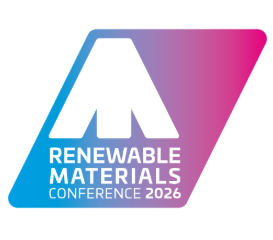
The Renewable Materials Conference (RMC), organised by the nova-Institute, will present leading solutions and innovations for replacing fossil carbon with biomass, CO₂ utilisation and recycling. The growing success of RMC demonstrates that its unique concept of presenting all solutions for
December 06, 2025 Read Full Article
Green & Sustainable Chemistry Summer School --- July 11-18, 2026 --- Burlington, VT APPLICATION DEADLINE December 15, 2025

The ACS Green and Sustainable Chemistry Summer School (GSCSS) is a highly selective week-long program for graduate students and postdoctoral chemists and engineers. Each year, approximately 75 exceptional students from North, Central, and South America and the Caribbean are selected from
December 05, 2025 Read Full Article
Nominations Open for Green Chemistry Challenge Award DEADLINE January 31, 2026
(American Chemical Society) The Green Chemistry Challenge Awards recognize novel green chemistry technologies that reduce or eliminate the use of hazardous substances, use less energy and water, and improve the sustainability of products while demonstrating economic benefits. Established in 1996 by the
December 05, 2025 Read Full Article
CALL FOR ABSTRACTS 10th Green & Sustainable Chemistry Conference --- May 18-20, 2026 --- Dresden, Germany DEADLINE December 12, 2025

We look forward to welcoming you to back to Dresden for a high-level and inspiring program which will explore inter- and transdisciplinary aspects of green and sustainable chemistry. View the full topics list. Invited speakers will be joined by the finalists of
December 05, 2025 Read Full Article
10th Green & Sustainable Chemistry Conference --- May 18-20, 2026 --- Dresden, Germany

The Green and Sustainable Chemistry Conference is focused on inter- and transdisciplinary aspects of green and sustainable chemistry. Reasons to attend Interact with high-level speakers: including government representatives and leading researchers from industry and academia. Gain a global perspective: coverage includes experience from
December 05, 2025 Read Full Article
30th Annual Green Chemistry and Engineering Conference --- June 15-18, 2026 --- San Antonio, TX
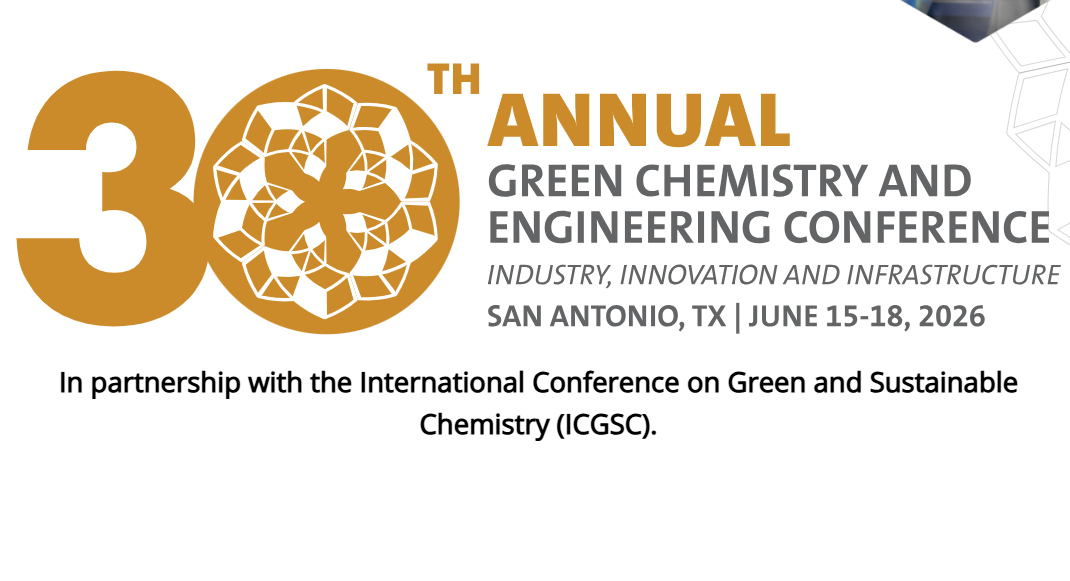
Attending GC&E feels like finding your scientific home. We focus on building community, providing networking opportunities, and supporting positive student experiences. Each year, the conference evolves, incorporating new ideas while maintaining its 30-year legacy. Its vision is for green and sustainable
December 05, 2025 Read Full Article
Energypath Science Fair --- May 9, 2026 --- Schnecksville, PA

Are you passionate about energy efficiency, energy conservation, renewable energy, or other topics relating to sustainable energy? Then you should participate in our Sustainable Energy Science Fair! Held at the Energypath conference, this science fair allows Middle and High School students
December 05, 2025 Read Full Article
Energypath 2026 and Pre-Conference Energy Camps --- July 12-16, 2026 --- Bethlehem, PA; includes Scholarship Information

Join us for Energypath 2026, where participants will explore today’s most exciting sustainable and regenerative energy technologies through hands-on learning and expert-led instruction. Each three-day Pre-Conference Energy Boot Camp (July 13–15) offers a unique opportunity to gain technical skills, collaborate
December 05, 2025 Read Full Article
Renewable Materials Conference (RMC) --- September 22-24, 2026 --- Siegburg near Bonn/Cologne, Germany and ONLINE

The Renewable Materials Conference (RMC), organised by the nova-Institute, will present leading solutions and innovations for replacing fossil carbon with biomass, CO₂ utilisation and recycling. The growing success of RMC demonstrates that its unique concept of presenting all solutions for
December 05, 2025 Read Full Article
CALL FOR PAPERS Bio360 Africa --- June 17-18, 2026 --- Johannesburg, South Africa DEADLINE unclear

We are very excited to announce the launch of Bio360 Africa!! The first edition will be staged in South Africa, 17-18 June 2026 at the Gallagher Convention Center in Johannesburg. The event will include a two day event hosting conferences, an
December 05, 2025 Read Full Article
Bio360 Europe --- February 11-12, 2026 --- Nantes, France

The meeting point for the Biotransition -- Bio360 Europe paves the way to a sustainable future. It is a unique platform for innovation, for inspiration, for transformation. Its an event with an eye to the bio-renewable future and with a foot firmly
December 05, 2025 Read Full Article
NOMINATIONS OPEN FOR INNOVATIONS AWARD CO2-based Fuels and Chemicals Conference 2026 --- April 28-29, 2026 --- Maternushaus, Cologne, Germany, and ONLINE DEADLIINE February 6, 2026

Prestigious "Best CO2 Utilisation" Innovation Award invites pioneering submissions by 6 February 2026 -- The innovation award “Best CO2 Utilisation” invites innovators to present cutting-edge Carbon Capture and Utilisation (CCU) and Power-to-X technologies that transform CO2 from a greenhouse gas into valuable feedstocks
December 05, 2025 Read Full Article
CALL FOR PRESENTATIONS, POSTERS Anaerobic Digestion on the Farm Conference 2026 --- June 9-11, 2026 --- State College, PA DEADLINE February 1, 2026

Anaerobic digestion on the farm has experienced a surge of interest and activity, owing to a variety of factors such as technology developments, public support, and increased awareness of its potential for energy production, rural livelihoods, ecosystem services, nutrient management,
December 05, 2025 Read Full Article
Japanese Media Members Learn about Value of U.S. Biofuels
(U.S. Grains & Bioproducts Council) The U.S. Grains & BioProducts Council (USGBC) recently escorted reporters from weekly Japanese business journals and other influential outlets on a tour of the U.S. biofuel value chain, with a focus on ethanol’s application as a
December 05, 2025 Read Full Article
New Study Finds California’s Soybean ILUC Values Are Outdated
(Clean Fuels Alliance America) The analysis reveals CARB’s ILUC values for US soy-based biodiesel and renewable diesel lack current data overstate emissions -- A recent study commissioned by Clean Fuels Alliance America and Farmers Fueling the Future finds that California’s indirect land
December 05, 2025 Read Full Article
MENA Biofuels, Saybolt Partner to Build UAE’s 1st SAF Testing Laboratory
(GCC Business News) MENA Biofuels has signed a strategic agreement with Saybolt International, a global leader in testing, inspection and certification, to establish the UAE’s first independent Sustainable Aviation Fuel (SAF) testing and certification laboratory in Fujairah. The new partnership, following the
December 05, 2025 Read Full Article
Green Biz 26 --- February 17-19, 2026 --- Phoenix, AZ

You’re leading change in an unpredictable political, social and economic environment. At GreenBiz, you’ll connect with peers and trailblazers and master the skills essential to face your company’s unique challenges. Join your community, including the most influential voices in sustainability,
December 05, 2025 Read Full Article
Homegrown Fuels Podcast with Tom Rogers and Jeff Manuel
by Sue Retka Schill (BBI International) Special EPM Podcast Series hosted by Sue Retka Schill featuring the new book: Ethanol—a Hemispheric History For the Future of Biofuels. This episode dives into the similarities and differences between ethanol in Brazil and the
December 05, 2025 Read Full Article
Million Air and Avfuel Bring Sustainable Aviation Fuel to Austin
(Biofuels International) Luxury FBO Million Air Austin (KAUS) and leading fuel supplier Avfuel Corporation came together to boost sustainable aviation operations at Austin Bergstrom International Airport with the addition of sustainable aviation fuel. The SAF — which went into service on November 20
December 05, 2025 Read Full Article
European Biomethane Benchmark: 2025 Edition
(SIA) The 8th edition of the European Biomethane Benchmark reveals sustained growth in the biomethane sector, in a context of expanding renewable energies and an evolving regulatory framework. The biomethane sector in Europe continues its strong growth momentum, with more than 1,500
December 05, 2025 Read Full Article
RSB Launches Market Acceleration Indicator to Unlock Investment and Scale SAF Supply
(Roundtable for Sustainable Biomaterials) Developed in partnership with World Energy and shaped by a broad, global consultation, this new framework recognises long-term environmental attribute certificate (EAC) offtake agreements and provides a credible demand signal to support financing for SAF production Geneva, Switzerland 4December 2025 – The Roundtable
December 05, 2025 Read Full Article
Minnesota Farmers Eye Crop Shifts to Enter Sustainable Aviation Fuel Market
by Mark Dorenkamp (Brownfield Ag News) Some farmers are considering crop rotation changes to tap into the sustainable aviation fuel market. Minnesota Farm Bureau president Carolyn Olson says there are growers in her state looking to grow winter camelina as a SAF
December 05, 2025 Read Full Article
Exploring Ethanol: New Fuel Trial to Start on Laura Mærsk
(Maersk) Summary: Maersk continues to explore options to diversify its low-emission fuel portfolio by testing ethanol in a dual-fuel methanol engine. Maersk to trial 50/50 ethanol-methanol blend on the vessel Laura Mærsk Initial E10 test confirmed safe integration and strong performance Ethanol offers another scalable,
December 05, 2025 Read Full Article
GEODIS Pilots Southeast Asia’s First Cross-Border Trucking Service Using Renewable Diesel
(GEODIS) GEODIS, a global leader in transport and logistics, has announced the launch of the region’s first cross-border trucking operation to be powered by Neste MY Renewable Diesel™, marking a major milestone in the decarbonization of its regional road network. The pilot
December 05, 2025 Read Full Article
API, Ethanol Groups Press Trump on E15, Small Refinery Exemption Reform
by Kim Chipman (Agri-Pulse) After a dramatic withdrawal of support from a key ethanol bill in October, the American Petroleum Institute is once again teaming up with ethanol stakeholders to push the Trump administration and Congress to help get the legislation
December 05, 2025 Read Full Article
World Fuel Services Supplies a Norwegian Cruise Line Holdings Vessel with Waste-Based Biofuels in Greece through Collaboration with EKO
(World Kinect) World Fuel Services, a World Kinect (NYSE: WKC) company (World Fuel) announces that Norwegian Cruise Line Holdings has carried out one of the first commercial biofuel bunkerings for a cruise vessel in Greece, with Norwegian Viva receiving a waste-based marine fuel
December 05, 2025 Read Full Article
Darling Ingredients Announces Agreement to Sell Approximately $60 Million in Production Tax Credits
(Darling Ingredients) Darling Ingredients Inc. (NYSE: DAR) today (December 4, 2025) announced an agreement to sell approximately $60 million of production tax credits to a corporate buyer. These credits were generated under the Inflation Reduction Act (IRA) by the company’s Diamond Green
December 05, 2025 Read Full Article
Willis Sustainable Fuels and Green Finance Institute Launch Accelerator to Advance UK’s Sustainable Aviation Fuel Infrastructure
(Green Finance Institute/Globe Newswire) Willis Sustainable Fuels UK Limited (“WSF”), a subsidiary of Willis Lease Finance Corporation (NASDAQ: WLFC) (“WLFC”) and the Green Finance Institute (“GFI”), an independent advisor to governments and investors, have announced a Sustainable Aviation Fuel (SAF) Project
December 05, 2025 Read Full Article
FincoEnergies Launches GoodFuels B15: A Reliable and Compliant Drop-in Biofuel for Inland Shipping
(FincoEnergies) FincoEnergies launches GoodFuels B15, a 15% FAME-based biofuel blend that helps the Dutch maritime industry reduce emissions immediately. With GoodFuels B15, FincoEnergies provides shipowners with a practical, reliable drop-in solution at a time when the need for concrete decarbonisation measures continues to
December 05, 2025 Read Full Article
The Digest’s 2025 Multi-Slide Guide to Strategic Avalanche’s Collaboration Matrix™
by Jim Lane (Biofuels Digest) Strategic Avalanche assists clients in commercializing sustainable solutions via the Collaboration Matrix™, addressing the gap between strategy and innovation. This systematic approach supports effective third-party partnerships, focusing on risk and resource sharing, and enhanced market access.
December 05, 2025 Read Full Article
Sustainable Biofeedstock Supply Chains for Advanced Biofuels in Europe towards 2050
(Concawe) Report no. 10/25: Advanced biofuels are expected to play a key role in the decarbonisation of the European transport sector, particularly in hard-to-abate segments such as aviation, maritime transport, and heavy-duty road vehicles. To support the EU’s climate neutrality objectives
December 04, 2025 Read Full Article
Ukraine Plants First Miscanthus Plantation to Restore Degraded Land and Produce Eco-friendly Biofuel
(The Odessa Journal) In Teofipol, Khmelnytskyi region, the first municipal miscanthus plantation in Ukraine—covering 8 hectares—has been planted with the support of a EUR 50,000 grant from Slovenia, the Khmelnytskyi Regional Development Agency reported. A plot of polluted, agriculturally unsuitable land near the
December 04, 2025 Read Full Article
Ethanol Blending Yields ₹1.55 Lakh Crore Forex Savings for India over 11 Years: Hardeep Singh Puri
(Economic Times Auto) Petroleum Minister credited ethanol blending, which increased from 1.5 per cent to nearly 19.97 per cent in the last 11 years, for substituting about 260 lakh metric tonnes of crude oil. READ MORE






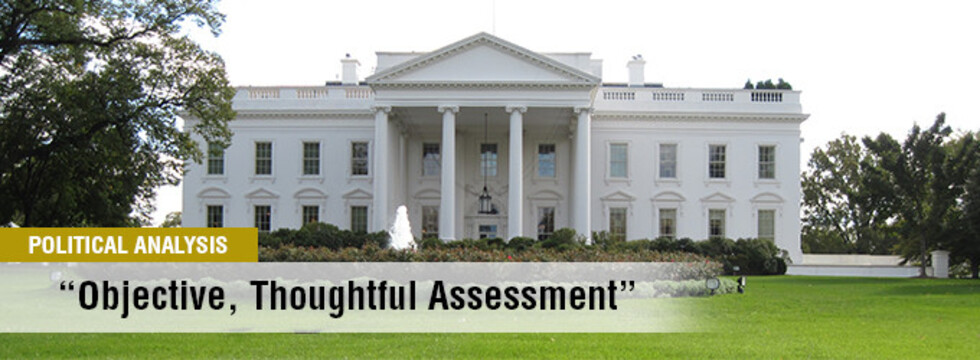




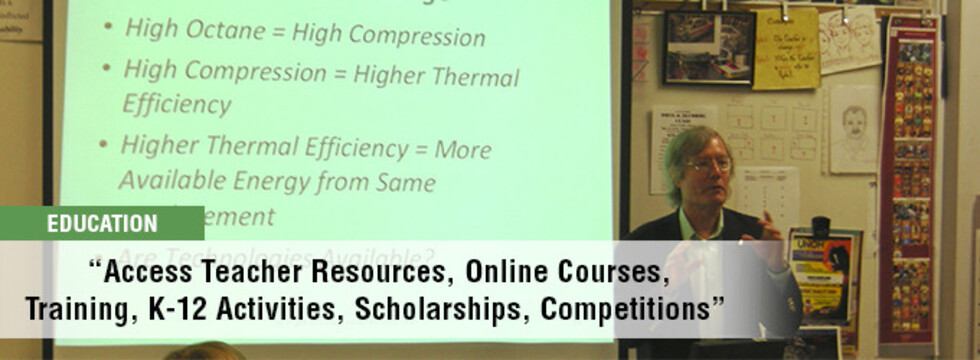







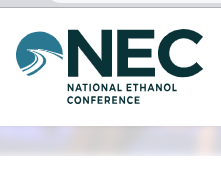

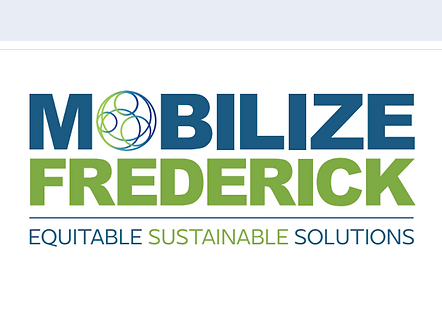






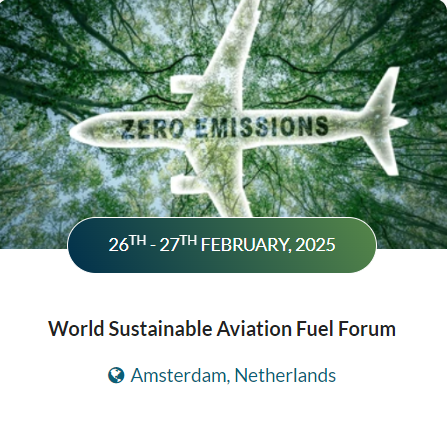






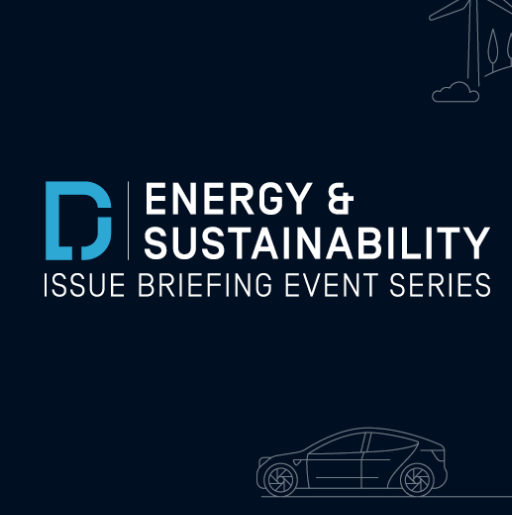



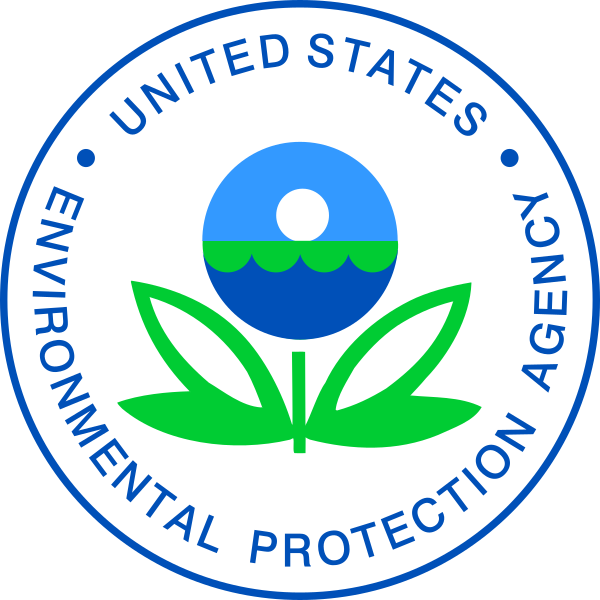


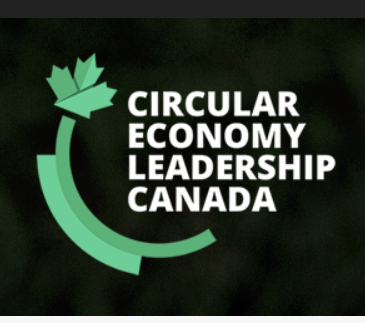
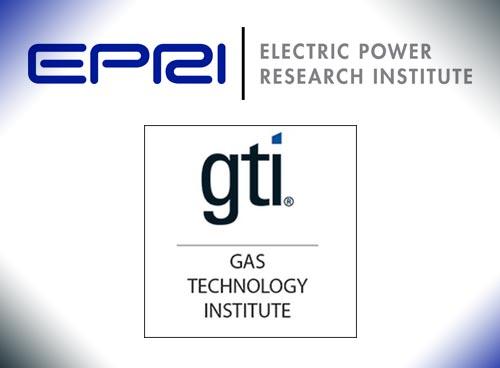

.jpg)




